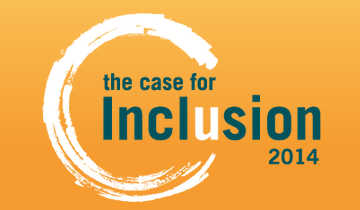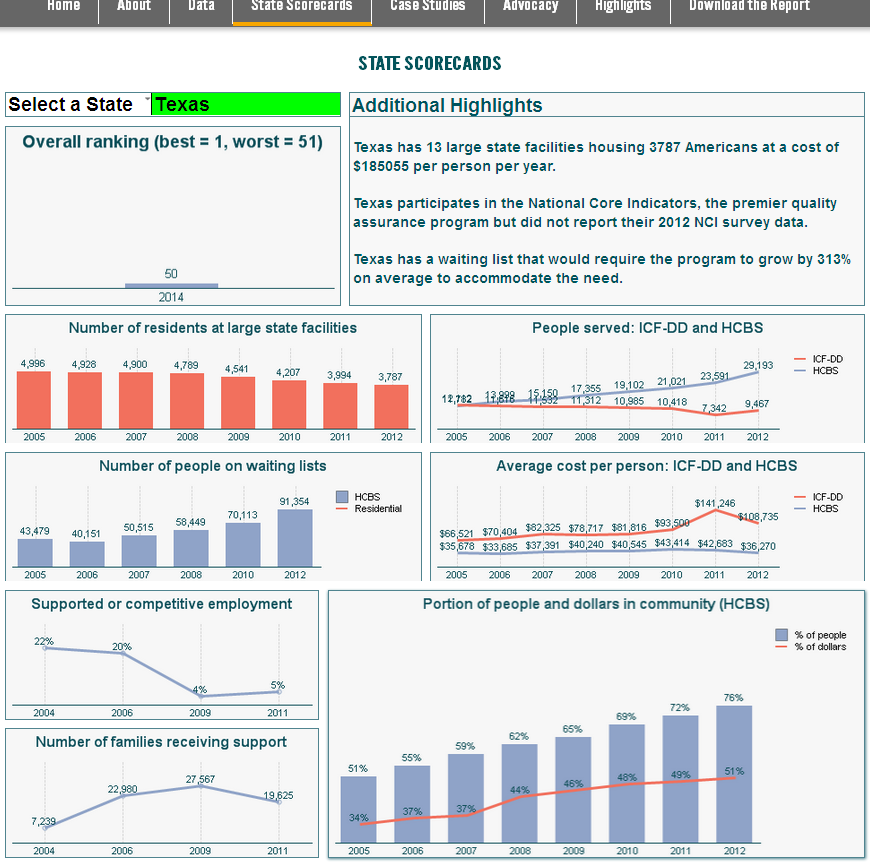- EverythingAutism.org is a parent-driven resource guide for parents of kids, teens and adults with autism in the Clear Lake area of Houston. We welcome your submissions! Have a provider or resource you want to share with other parents, feel free!
“The Case for Inclusion” Report on Quality of Life for those with an Intellectual Disability
Many of us in the autism community are familiar with various “Best Places to Live with Autism” reports which come out every year, often in April for Autism Awareness Month. Sometimes they are by state and other times they are by city; if by state, and based largely on Medicaid expenditures per capita, and Texas is always 49th or 50th. If by city, the winners are some place in the northeast where the cost of living is ridiculously high. With all these studies one wonders about the methodology, the extent to which more money spent translates better quality of life when housing is so much higher in other parts of the county than in Texas.
 One of the best studies conducted on quality of life for people with intellectual disabilities is not done by the Arc of the Unites Stated or Autism Speaks or the Kaiser Family Foundation, but by the United Cerebral Palsy Foundation. The Case for Inclusion Report, a project which began in 2006, is updated every two years and is full of useful data about the quality of life in different part of the country for those with an IDD presented in an easily digestible format, with lots of graphics and interactive features. Thee most current one is for 2014 and is available here.
One of the best studies conducted on quality of life for people with intellectual disabilities is not done by the Arc of the Unites Stated or Autism Speaks or the Kaiser Family Foundation, but by the United Cerebral Palsy Foundation. The Case for Inclusion Report, a project which began in 2006, is updated every two years and is full of useful data about the quality of life in different part of the country for those with an IDD presented in an easily digestible format, with lots of graphics and interactive features. Thee most current one is for 2014 and is available here.
What is most remarkable about this study is that it focuses on issues like loneliness, whether individuals are stuck in a residential home unable to get out, or if they do, have no place to go. It’s so right on, I had to borrow this graphic from the report’s home page:

We like to think that people with intellectual disabilities are better off in a residential home than in an “institution”–that we as have come a long way in this regard. But if residents cannot get out and have opportunities to be with others, and be genuinely part of a larger community, what is the difference between being in a home and institutionalized?
Being warehoused in a room in a stranger’s home in a bedroom community where there are few visitors to report abuse, few others around to interact with, no or very limited transportation options, is potentially worse than being in an institution with a lot of staff, residents to make friends with, outings and activities, and access to a larger world beyond one’s bedroom. We associate the term “institution” with something clinical and grim, but putting people in private homes where they are subject to neglect and isolation and callous individuals working the system to get Medicaid money seems not ideal either. If I am way off, please feel free to comment.
I wanted to share this report with the Autism community because it is really excellent.
Would love to take this methodology and apply it locally to Houston or Harris–Galveston–Brazoria Counties. It’s a grant proposal in the making.

Emily Nedell Tuck

